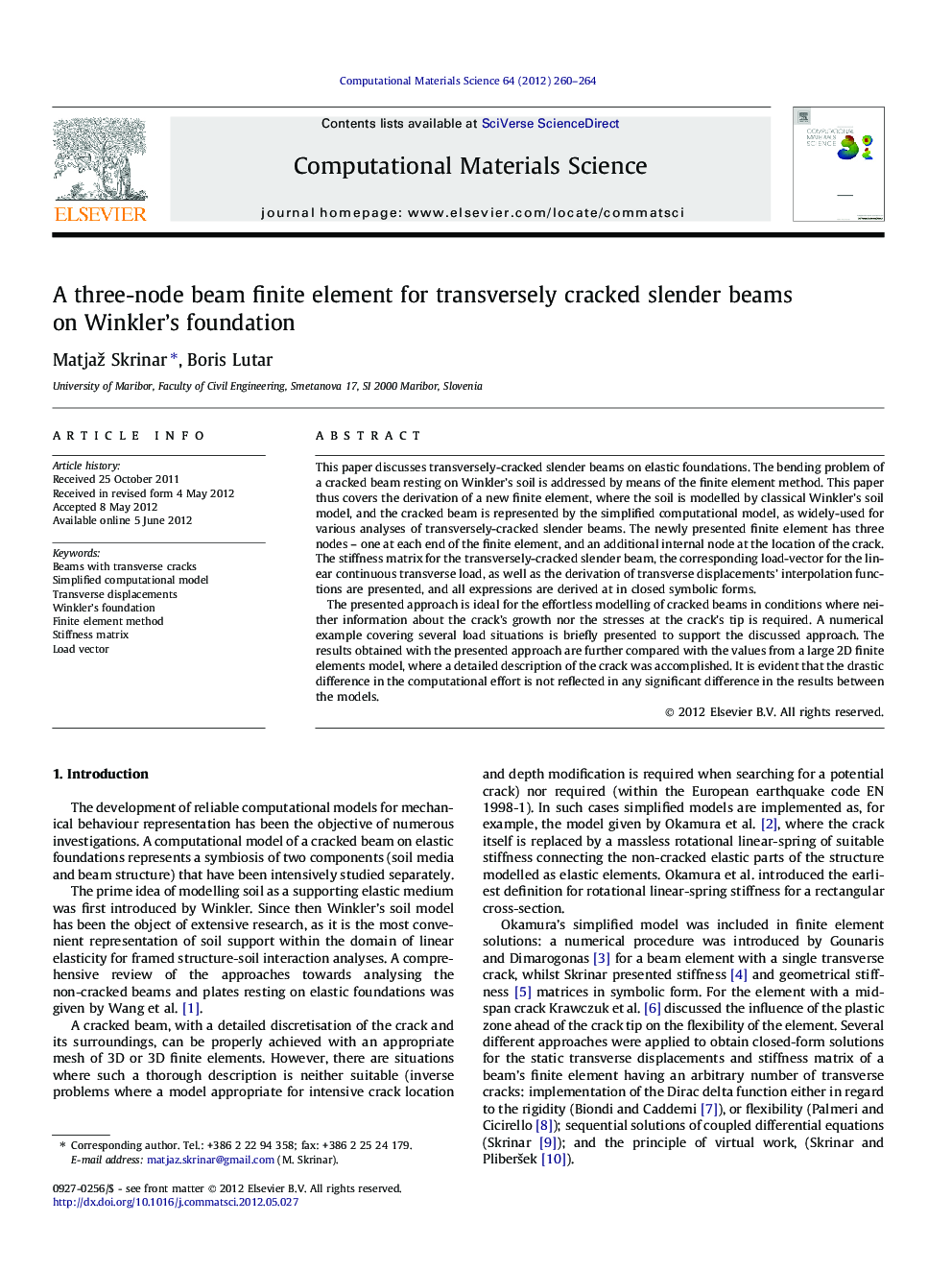| Article ID | Journal | Published Year | Pages | File Type |
|---|---|---|---|---|
| 1561723 | Computational Materials Science | 2012 | 5 Pages |
This paper discusses transversely-cracked slender beams on elastic foundations. The bending problem of a cracked beam resting on Winkler’s soil is addressed by means of the finite element method. This paper thus covers the derivation of a new finite element, where the soil is modelled by classical Winkler’s soil model, and the cracked beam is represented by the simplified computational model, as widely-used for various analyses of transversely-cracked slender beams. The newly presented finite element has three nodes – one at each end of the finite element, and an additional internal node at the location of the crack. The stiffness matrix for the transversely-cracked slender beam, the corresponding load-vector for the linear continuous transverse load, as well as the derivation of transverse displacements’ interpolation functions are presented, and all expressions are derived at in closed symbolic forms.The presented approach is ideal for the effortless modelling of cracked beams in conditions where neither information about the crack’s growth nor the stresses at the crack’s tip is required. A numerical example covering several load situations is briefly presented to support the discussed approach. The results obtained with the presented approach are further compared with the values from a large 2D finite elements model, where a detailed description of the crack was accomplished. It is evident that the drastic difference in the computational effort is not reflected in any significant difference in the results between the models.
► We model a slender transversely-cracked beam resting on Winkler’s foundation. ► The derived finite element has an additional internal node at the crack’s location. ► The crack is modelled as a rotational spring connecting two non-cracked parts. ► The related stiffness matrix and load vector are derived at in closed symbolic forms. ► The presented expressions enable the computation of transverse displacements and inner forces.
